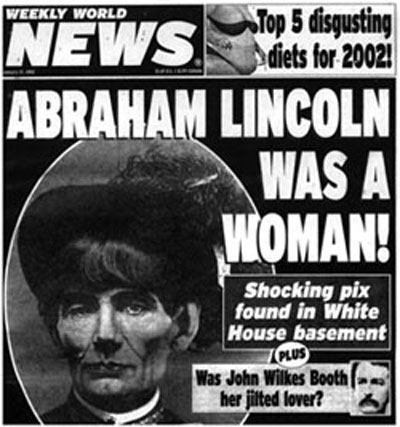Contrary to what many believe, Santa Claus as we know him today – sleigh riding, gift-giving, rotund and white bearded with his distinctive red suit trimmed with white fur – was not the creation of the Coca Cola Company. Although their Christmas advertising campaigns when I grew up in the 1930s and '40s, were key to popularising the image, Santa can be seen in his modern form decades before Coca Cola’s illustrator Haddon Sundblom got to work. Prior to settling on his famed red garb and jolly bearded countenance, throughout the latter half of the 19th century, Santa morphed through a variety of different looks. From the description given in Clement Moore’s A Visit from St Nicholas in 1822, through the vision of artist Thomas Nast, and later Norman Rockwell, Mr Claus gradually shed his various guises and became the jolly red-suited Santa we know today.
For most of my life I have enjoyed perpetuating the Santa Claus myth while integrating it with the traditional celebration of the birth of Christian Messiah, Jesus Christ of Nazareth.
As a youngster with a vivid imagination, I fully immersed myself in the idea of a workshop somewhere in the North Pole where a jolly old man employed elves to help him make toys for girls and boys which he in turn delivered in a sleigh driven by eight tiny reindeer on Christmas eve. Happy, harmless thoughts that brought joy to an impressionable young mind and helped instill the spirit of true Christmas giving.
 |
A young Santa Me with then three-year-old
granddaughter Alyssa. |
As a father, I derived equal joy in reliving those happy Christmas memories with my children and making it become real for them. So taken was I with all things Santa Claus that in time I became a professional "Santa's helper" in department stores and shopping malls, even making appearances at Christmas concerts, company parties, special events and community parades. I prided myself in being as authentic and believable as possible, even going so far as to memorize the names of all Santa's reindeer just in case I was tested by an inquisitive youngster -- and I was. A Santa's voice and trademark Ho, Ho, Ho was cultivated. When I donned that red suit, white beard and ample belly padding, I actually found myself taking on the persona of Santa Claus. It was an exhilarating, magical experience of theatrical proportions.
Expressions of excitement and the wonder that was evident in the bright eyes of clamoring, awe-struck children made it all worthwhile for me.
I do not play the role of Santa anymore but if I did, I would not need a fake beard, wig and fat belly...I have ironically grown my own; in fact I am often called "Santa" by friends and strangers alike and I quite enjoy the recognition, especially the "you would make a good Santa" comment to which I respond "been there and done that!" The other day a fellow took one look at me, stopped in his tracks and said: "You look like someone who might come down my grandson's chimney in a few weeks."
With a degree of remorse, however, I cannot help but think about how commercialized the concept of Santa has become today at the expense of the true reason for the celebration of Christmas.
The downside to the "stuff" of Christmas
Christmas, Chanukah, Kwanzaa, Bodhi Day, Winter Solstice, Yule, Pancha Ganapti -- you name it -- December brings with it a host of traditional holidays across the religious spectrum. Winter, for much of recorded human history, was a time for families to come together to enjoy the warmth of the hearth as they anxiously awaited the return of spring.
It seems that in recent times, however, a new holiday has arisen that has quickly supplanted all the rest, one that a fellow Universal Life Church writer calls (for lack of a better term): “Stuffmas”. Shoppers flock to retail stores during the “Stuffmas” season which has become the frenzied month-long celebration of jingle-y music, sweet pastries, and above all, stuff...lots and lots of stuff.
Throughout this season people around the globe are bombarded with advertisements to buy all of the latest, greatest, and newest pieces of plastic. Our quest to accumulate “stuff” has become so ferocious in recent years that shopping can be a deadly affair – literally. Each “Stuffmas” season kicks off with the aptly named “Black Friday”, an event where otherwise innocent people risk getting trampled to death as they rush to grab bargain-basement deals from their local superstore.
Indeed, devotees of “Stuffmas” are becoming increasingly fervent. One could easily argue that the secular celebration of giving and receiving is more than just a holiday, that instead it has become a full-hearted embrace of Earth’s true largest religion: Materialism. Has the true meaning of Christmas been lost to the worship of stuff?
Previous generations of children were taught to be on their best behavior because God was watching.
Today, the lesson remains the same – children are still encouraged to behave. However, the stakes are much different...God isn’t watching anymore, Santa is. Sins are punished not with eternal torment, but with the threat of withholding of presents. When kids are taught that their actions are monitored by a toy-bearing fairy-like man, and that good behavior is always rewarded with shiny new things, how could we expect them not to start worshiping the idea of
stuff and the mythical old gent who delivers it while they are in bed sleeping at night.
Society created this new religion and, with some clever marketing (pioneered by the Coca Cola company), we indoctrinated ourselves into it. The entire course of our lives has been painstakingly engineered by economists to ensure maximum output, following this general course: We’re Born > We Work > We Buy > We Die. Too often a person’s value is determined not by the content of their character, but by the monetary value of their assets.
As mentioned earlier, winter has customarily been a time for reflection. Perhaps we should take some time to do just that this year. As we look around at the world we created, are we happy with what we see? Regardless of what your traditional practises are, there is no doubt that “Stuffmas” is touching your life in some way. While it certainly does bring some feelings of joy (who doesn’t like receiving gifts?), there are some evils associated with it as well. Most of us have friends or loved ones that struggle with anxiety over finances, and these issues are always made worse during the holiday season when there is constant pressure to spend money on new things for ourselves and others.
Personally, I have experienced pangs of guilt as resources have gradually limited my Christmas spending. My wife and I have even agreed to not exchange gifts with each other. Time with family (when health and circumstances permit) and a good Christmas dinner with as many traditional trimmings as possible, has come to suffice.
I truly feel that you would be hard-pressed to find anyone who did not think that perhaps it is time that we wind-down “Stuffmas”, at least by some degree. The question is: how? Actually, the question is, can we? Have we become so invested in our materialism that there is no true exit?
Sadly, it is beyond the comprehension of this old pretend Santa!
In this day and age, our entire economy depends on people continuing to buy stuff. In many cases businesses actually depend on the month of December alone to make the difference between a good and bad year from a financial ledger standpoint.
...And the buying public takes the next 12 months to pay off their associated credit card debt so that they can put more
stuff on it again next year at this time.
Somehow we have lost sight of the fact that Christmas is a "holy day" and was not intended to be the generic, free-spending, commercialized "holiday" that is now generally accepted in a politically correct world.
Oh well, Happy
Holy Days everyone...and a Merry Christmas too! I hope your particular Santa is good to you!
Enjoy your
stuffing -- turkey variety that is.











